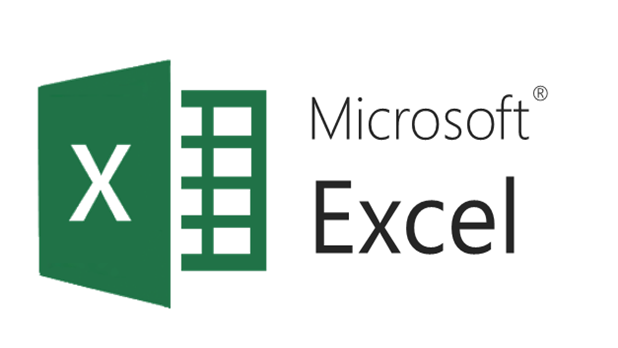6 Ways to Convert Excel Sheets to PDF Per Page

Many professionals and students rely heavily on Excel for various tasks ranging from simple data entry to complex data analysis. However, sharing these spreadsheets in a more universally readable format like PDF is often necessary, especially when you want to ensure data integrity and consistency across different devices and software. This blog will walk you through six efficient ways to convert Excel sheets to PDF, ensuring each page converts correctly.
Why Convert Excel to PDF?

Before diving into the methods, let’s understand why you might want to convert your Excel sheets to PDF:
- Universal Readability: PDFs can be opened on any device with free software like Adobe Acrobat Reader, making them ideal for sharing across different platforms.
- File Security: PDF files can be password-protected, restricting unauthorized access or edits to the document.
- Fixed Layout: PDFs maintain the layout, ensuring that the document looks the same on every screen or printer.
- Reduced File Size: Often, PDFs are smaller in size compared to Excel files, especially when compressed.
- Consistent Printing: PDFs allow for more precise control over what is printed, preventing misaligned or incomplete prints from Excel.
1. Using Microsoft Excel’s Built-in Feature

Excel’s native PDF conversion feature is straightforward:
- Open your Excel workbook.
- Navigate to File > Save As.
- Choose PDF from the dropdown menu for the “Save as type.”
- Select Options if you need to change settings like including hidden sheets or specific ranges.
- Click Save.
⚠️ Note: This method does not offer advanced PDF settings like compression or encryption.
2. Utilizing Adobe Acrobat

Adobe Acrobat provides a comprehensive toolset for PDF creation and manipulation:
- Open your Excel workbook.
- Go to File > Print.
- Select Adobe PDF as your printer.
- Choose the print range and settings.
- Print to generate a PDF.
With Adobe Acrobat, you can also batch convert multiple Excel files at once or apply advanced settings like compression, encryption, or adding bookmarks.
3. Online Converters

There are numerous online tools available for PDF conversion:
- Visit a trusted online converter like Smallpdf or PDF2Go.
- Upload your Excel file.
- Select your conversion settings, if any.
- Download the converted PDF file.
⚠️ Note: Always ensure you’re using reputable services to avoid data breaches or privacy issues.
4. Printing to PDF

This is the simplest and most straightforward method:
- Open Excel, go to File > Print.
- Select Microsoft Print to PDF or your operating system’s PDF printer.
- Choose your print settings (include all pages or specific sheets).
- Click Print to convert to PDF.
5. VBA Script for Customization

If you frequently need to convert Excel sheets to PDF with specific settings:
- Open Excel.
- Press ALT + F11 to open the VBA editor.
- Insert a new module and paste the VBA code to automate PDF conversion.
- Modify the code for your specific needs like file paths, sheet names, or page layout.
Public Sub ConvertToPDF()
Dim ws As Worksheet
Dim fileName As String
fileName = “C:\YourPath\YourFile.pdf”
For Each ws In ThisWorkbook.Worksheets
ws.ExportAsFixedFormat Type:=xlTypePDF, Filename:=fileName, Quality:=xlQualityStandard, _
IncludeDocProperties:=True, IgnorePrintAreas:=False, OpenAfterPublish:=False
Next ws
End Sub
⚠️ Note: Make sure to change the path and file name to your desired location and file name.
6. Using Third-Party Software

Tools like Able2Extract, Nitro Pro, or Foxit PhantomPDF can offer more control over your PDF conversion:
- Install your chosen software.
- Open Excel and select the sheet to convert.
- Use the software’s feature to Export or Save As PDF.
- Adjust settings for PDF like security options, bookmarks, or page layout.
To sum up, converting Excel sheets to PDF per page offers numerous benefits like universal readability, file security, and layout consistency. You can use Excel's built-in functions, Adobe Acrobat, online tools, system printers, VBA scripts, or third-party software to achieve your goals. Each method has its own advantages, and the best one for you will depend on your specific needs, such as security settings, file management capabilities, or workflow integration.
What are the limitations of Excel’s built-in PDF converter?

+
Excel’s built-in PDF converter doesn’t offer advanced options like document compression, encryption, or creating custom bookmarks.
How can I ensure that my PDF is encrypted for security?

+
Use tools like Adobe Acrobat or third-party PDF creation software to add encryption and security settings to your PDF file.
Can I automate PDF conversion from multiple Excel files?

+
Yes, with software like Adobe Acrobat or custom VBA scripts, you can batch convert multiple Excel files to PDF.
How does the file size of PDFs compare to Excel files?

+
PDFs often result in smaller file sizes due to compression, but this can vary based on the content and settings used during conversion.
Which method provides the most control over the PDF output?

+
Third-party software like Able2Extract or Foxit PhantomPDF typically offers the most control over the conversion settings, including security, layout, and more.